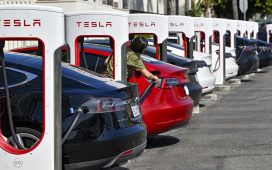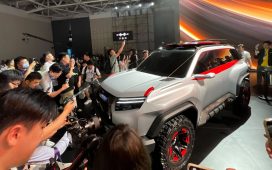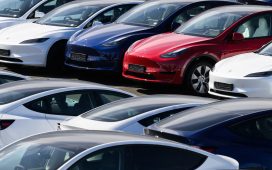What about making batteries in-house?
We looked into that in depth roughly two years ago and decided that is not our world. We don’t have the skills and experience to move into that area. Another reason for this was that we eventually foresee high-voltage batteries being part of the car and part of the chassis. That is where our customers, the automakers of the world, want to take responsibility as it is part of the development of the car. Therefore, we will focus on the electronics, the management of the battery, which is extremely difficult and includes a lot of functions.
There have been several recalls over the last year because of battery fires. Has the industry as a whole perhaps underestimated the complexity of battery thermal management and is that an opportunity for Vitesco?
Absolutely. That is part of the battery management system, but also the whole complexity of an electric drivetrain. Sometimes we hear that with the move toward electrification things will become less complex; that an EV is a simple product because all you have is the e-motor and the battery. That’s not at all true. It is a high-tech, highly complex product that is extremely challenging but also extremely interesting.
So much of what you’re doing is electronics based, which means you need a lot of microchips. What has Vitesco done to offset the ongoing shortage of chips and how long do you expect the problem to last?
The underlying problem of being short on chips will continue into 2022, but I hope that we don’t have any additional surprises. What are we doing? We are in very close contact with our customers. We manage the situation day by day to try to make sure we don’t stop their production lines. We fly components from Asia to Europe, from Europe to Asia, wherever they are needed to be so that we can serve our customers. There’s a lot of momentum in the supply chain to make sure that our customers are served. We can’t always guarantee this is the case, but we do everything possible to continue to supply them without interruption.
Chip suppliers have told us that automakers and suppliers were going to get a more reliable supply of chips in the second half. Has this happened?
I can confirm that we see have seen a better overall supply and we hope that continues. Unfortunately, the last few weeks have brought some negative surprises [rising COVID-19 infections slowed chip output at factories in Vietnam and Malaysia]. But all in all, we have seen an improvement.
What other challenges do you have on your radar?
Looking to our specific situation combined with the overall market boom for electrification, the biggest challenge I see is that we make sure that we grab our part of this big opportunity and translate that into business. I hope that we don’t make mistakes or have the wrong products.
It sounds like the dilemma you are facing is how to maximize this incredible moment, right?
Absolutely. That’s a good summary and hopefully it will also be reflected in our share price.








